Twins? Not quite.
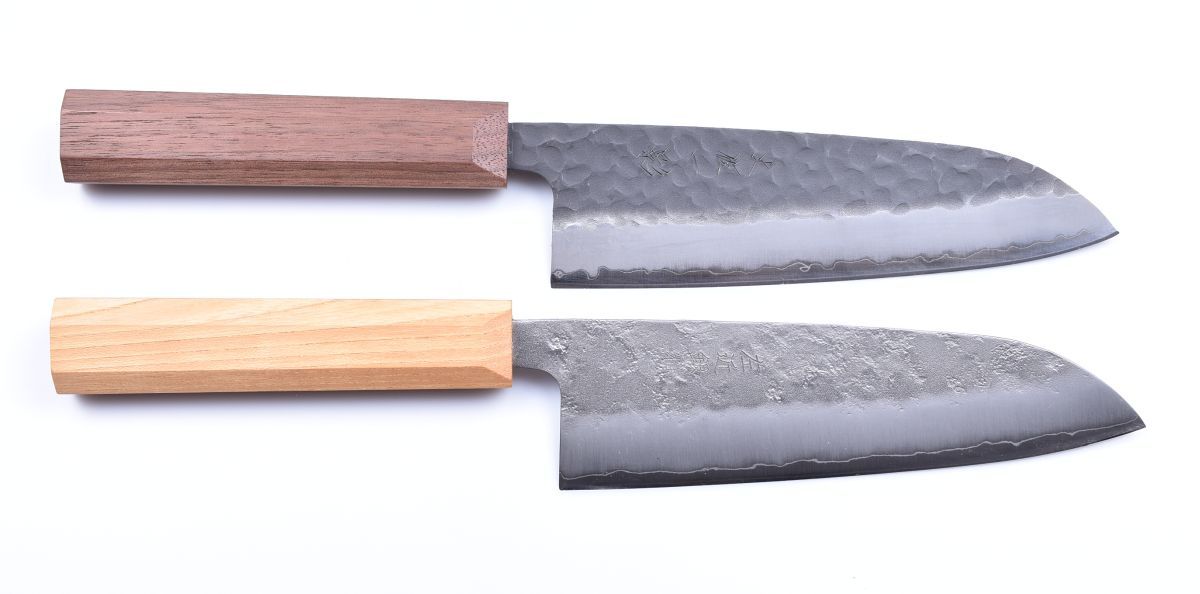
These days two interesting knives have arrived in Nippon Knives . Obviously „Tosa made“. The Company Hokiyama Cutleryis launching them on the occasion of the company's 100th anniversary celebrations. At first glance, they look like one series, but their names say otherwise. Speaking of names, they give the impression of complexity. Shinsuke Hokiyama confirms with them his sense of precision. And so we come to another Japanese tradition. Name things according to their appearance. So let's make sure that this also applies in this case.
Tosa-Ichi Shadow-Tsuchime Santoku
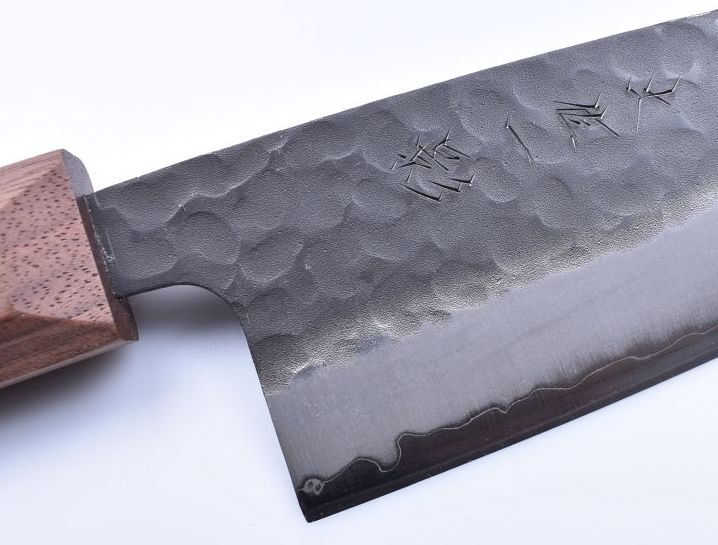
Knives included in the group Tosaichi are made of traditional materials. These are high-carbon steels produced by Hitachi Metals at its Yasugi Specialty Steels plant. This is where their abbreviated name Yasuki comes from. It is mainly about Shirogami a Aogami so called white and blue steel. The color naming comes from the color of the paper in which the steel is packed. Yasuki with a minimal content of unwanted ingredients resembles a mythical tamahagane, from which the best swords were made. This is due to the quality iron ore sand around Yasugi. In our case, the core of the blade is forged from the highest line of Yasuki Blue – Aogami Super.It combines Aogami 1 hardness / 63 HRC / and Aogami 2 strenght. Thanks to vanadium and molybdenum legates, it forms fine carbides, which is reflected in excellent abrasion resistance. The blade holds its blade for a very long time and grinds well on quality whetstones.
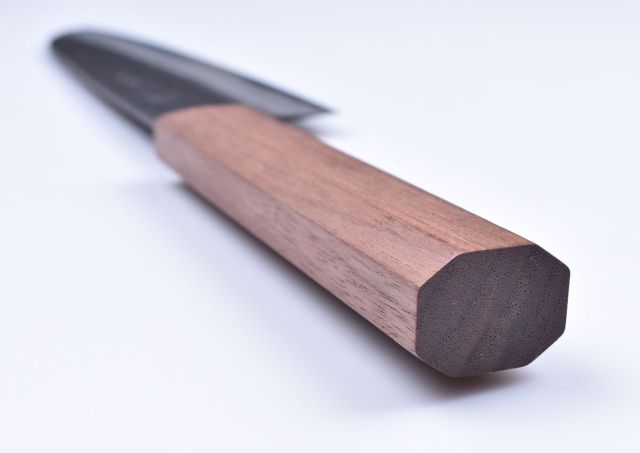
From English expression Shadow the unpolished blade name comes. It has a dark shade, which is the result of hardening steel. The Japanese use such blades to call Kurouchi, what means black. The lower part of the blade is sandblasted and resembles a hamon of Japanese swords.
The texture on the blade resembles the blows of a blacksmith's hammer. The manufacturer did not use the English word Hammeredthis time, but Japanese original Tsuchime. The depressions add dynamism to the blade.
The last expression in this long name is Santoku. It speaks of the versatility of the knife, as the term santoku is used to denote 3 advantages. These consist in the possibility of slicing fish, meat and vegetables with one knife.
Even with those names, it is necessary to decipher the inscription in kanji characters on the blade. The text in the kanji font is Tosa-Ichi Kage. We know Tosa, Ichi means the first or the best and Kage means shadow.
The blade is inserted into an octagonal handle made of walnut wood. The absence of a ferrule contributes to elegant simplicity.
Sakon Ginga-Nashiji Bright Santoku

The second knife, despite its apparent similarity, belongs to a different category. In the section Sakon you will find knives made of modern stainless materials. In our case, it is "silver" Gingami 3. It is the steel that is most closely to traditional Yasuki. But unlike them, it contains 13-14.5% free chromium, which provides it with anti-corrosion properties. Like Yasuki, Gingami 3 feels good about whetstones. Its hardness is 61-62 HRC. Ginga is therefore the designation of the material which consists of Gin – silver /according to the color of the wrapping paper/ and Ga – elegant.
As was the case with the previous knife, the blade of this one bears an interesting texture. It resembles the flesh of a pear, which is called in Japanese Nashiji. Contrary to dynamic Tsuchime Nashiji excudes stoic calm.
The color of the blade is also different. Black was replaced by silver, which the manufacturer called an English term Bright. The lower sandblasted part again resembles a hamono. Expression Santoku we have already explained and the kanji characters embossed on the blade represent the name Sakon Ginga.
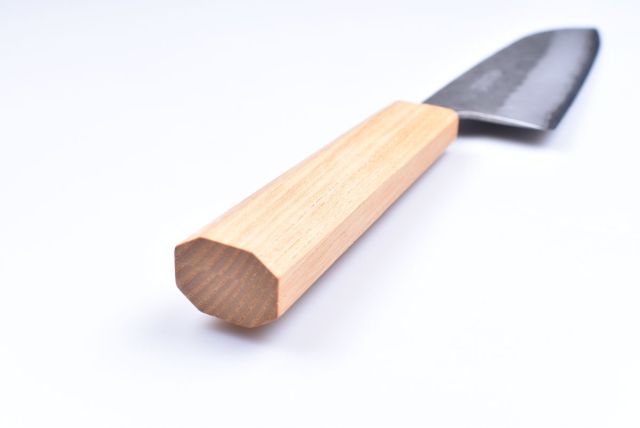
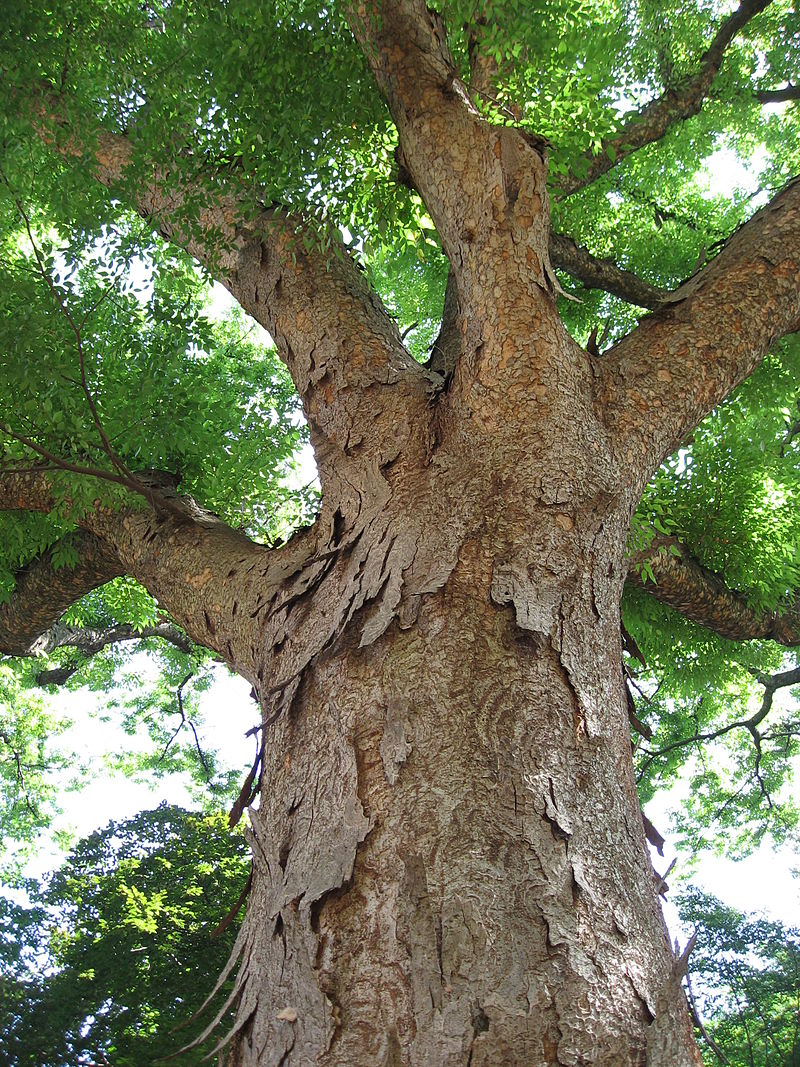
The octagonal handle is made of zelkova. It is a Japanese hornbeam, which in the past was due to its durability a popular building material of shrines and temples. Today, due to its price, it is rather used for home accessories. The version without ferrule looks clean and minimalist.
©2010-2019 Copyright Roman Ulík, Nippon Knives, www.japonskenoze.sk, All rights reserved
Photographs and texts are protected by copyright and their use is not possible without the author's consent.


 Sign in
Sign in Registration
Registration



























